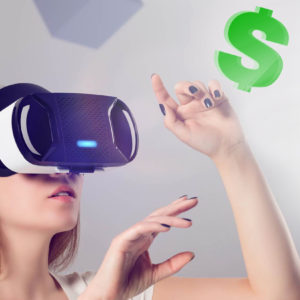Augmented Advertising: Bridging the Divide Between Physical and Digital
While the technology is still in the early stages of widespread social acceptance, some would say the future of advertising and marketing is an augmented one. In our digitally fueled business landscape, consumer immersion is shaping B2C creativity now more than ever, and it’s easy to see marketers taking advantage of the latest and quickest evolving platforms in immersive media: augmented and virtual reality.
Why Augment Reality?
Depending on who you ask, the answer may be, “Why not?” It’s safe to say that we humans use technology to make our lives less complicated and more automated, and consumers have been augmenting their routines with some form of digital component or another for a long, long time. The folks over at Touchstone Research have put together an infographic spotlighting some augmented reality milestones as far back as the late 1960s. So, media immersion through augmented reality is definitely not a new one, but it’s only in recent years that we’ve seen large movers and shakers like Google and Facebook spearheading the technology for consumer purposes.
What’s Been Cooking in the Augmented Reality Kitchen?
Google Glass prototype (April 2013): Google Glass was met with a candid “nerds-only” reaction when it was passed around as a prototype in 2013, but it was a valiant effort by the search engine giant to try and blend physical reality and a digital display by way of a “ubiquitous computer.” Google Glass boasted features like a camera and touchpad as well as applications such as email, news, maps, Facebook, and Twitter.
Facebook buys Oculus (July 2014): For a while, Oculus VR was the frontrunner in the race toward a commercial virtual reality product, and early developer kits for the Oculus Rift headset looked promising—so promising that Facebook bought Oculus VR for $2 billion in 2014, and Facebook founder Mark Zuckerberg wants to use VR technology to “start building the next major computing platform that will come after mobile.” Users have already taken advantage of the technology to explore potential for video gaming, amusement park rides, and virtual tourism.
Snapchat Lenses (Fall 2015): Teens and parents alike have been snapping and sharing silly photos with friends using Snapchat’s Lenses feature since 2015. Snapchat has been around since 2011, but it only recently implemented its most popular augmented reality elements. Users can add mustaches or funny hats to their photos and videos, but companies are also getting into the spirit of the things. A good example is the Ghostbusters-themed Snapchat dual-lens feature that recently popped up to promote the 2016 movie.
Pokemon Go (July 2016): Making headlines and adding $9 billion to Nintendo’s market value in only a few days, the augmented reality smartphone video game app Pokemon Go is arguably bringing augmented reality back to the masses. The game uses a combination of geolocation-based discovery and social sharing as friends and strangers track down fictional animal-like creatures and battle one another using ones they’ve found.
The Future of Augmented Marketing
Granted, taking funny pictures and walking around town looking for Pokemon isn’t the most open avenue for marketers to make inroads, but there’s a good chance we’ll see more outside-the-box strategies in the near future.
As mentioned, the technology fueling some of the most promising consumer products is only just gaining traction. As businesses take the reins and realize the medium’s potential for consumer reach, more companies will not only develop apps and advertisements for platforms already in use but will also (as Zuckerberg put it) continue to create the next major platform. Who knows? Maybe some day soon we’ll be living in a world that looks a lot more like science fiction.
Here’s a short concept film by design consultant Keiichi Matsuda that imagines what that world might look like: https://vimeo.com/166807261
Andrew is a word wizard/content creator extraordinaire who considers himself a bit of a dabbler. From writing to reading, exercise, outdoor exploration, art, music, photography, and even a little existentialism, it’s all color on the creative palette.

